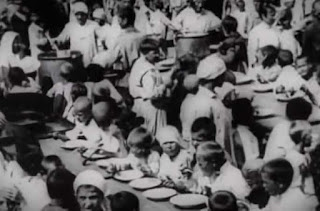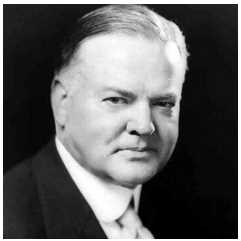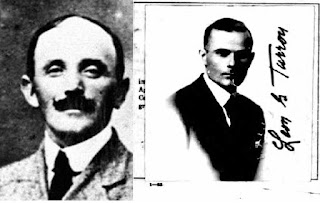Around 2019, during my research on Leon Turrou, I contacted his descendants, including his grandson Bob. He had limited knowledge about his grandfather's biography and referred me to Richard Bareford and Rhodri Jeffreys-Jones.
Rhodri Jeffreys-Jones is a historian and professor at the University of Edinburgh in Scotland. At the time, he was finishing his book on Leon Turrou, titled "The Nazi Spy Ring." His work portrays Leon Turrou, an FBI agent in the 1930s, in a very (perhaps too) favorable light. Bertrand Patenaude wrote a critique of the book published in the WSJ.
As for Richard Bareford, he became interested in Leon Turrou as part of his personal research for a novel project, which never materialized. He wrote a biography of Leon Turrou published on the Findagrave website. While it is interesting, it contains numerous errors. There are unfounded or even false claims. For example, Leon Turrou never joined the French Foreign Legion during World War I. This fact can be demonstrated by the absence of a record of a Leon Turrou (or Turovsky) serving in the legion. More recently, Bareford was consulted for a book on the FBI, "The Federal Bureau Of Investigation: History, Powers, and Controversies" by Douglas M. Charles and Aaron Stockham. They reused some of the same inaccurate elements. I haven't read the entire book by Charles and Stockham, but this raises questions about the reliability of the book and the lack of fact-checking.
I had shared a draft of my book "Affaire Seznec: Les archives du FBI ont parlé" with Bareford. Despite claiming to have connections to France, he doesn't speak a word of French. He used an automatic translator. He was furious about what he believed to have understood from my book and its implications in the Seznec case. Additionally, I thanked him for providing me with a document, but in his anger, he asked me to remove his name. I complied with his request, which had little consequence for the thesis of my book. In reality, the documents had also been shared with me by Rhodri. I do not know who originally requested them, perhaps a member of the Turrou family.
Following that, Bareford posted the following comment on a blog :
"As I suspected, I recognize some of my writing on your blog. When I posted it to Find a Grave, I had no knowledge of the Seznec affair. My interest in Turrou was to correct the FBI's historic canard that he was the greedy, disloyal oath-breaker who bungled the Rumrich investigation.
Vilain contacted me last October about my Turrou sources, which I shared. I had read Patenaude's book and thought it a hatchet job on Turrou, relying on rumors and gossip spread by his rivals in the ARA. He doesn't say a word about Turrou's reason for joining the ARA, to reunite with his family. In this he was successful, perhaps with the assistance of Commissar Dzerzhinsky.
Vilain recently sent me a draft of his book and I was unconvinced by his Turrou theory. He rejected my suggestions to include contrary information. I expect Rhodri's book will present a more balanced view of Turrou. As for 1923 the only curious incident not in the Find a Grave biography is Turrou's meeting with Herbert Hoover in New York on or about 14 May (this is in Patenaude's book); a week later Turrou was back in France. I kind of think there was a connection, that perhaps Turrou was on some sort of mission for Hoover. The only reference Turrou ever made about this period was that he had a business proposition that ended "in calamity", implying that he had been swindled. He was a hustler and a gambler but there is no evidence that he was a criminal. Vilain based his theory on two 1938 FBI interviews with Turrou's erstwhile land lord, Joseph Davidowsky. He cites them as proof that Turrou was capable of anything, that the purpose of his 1923 trip was to defraud his American partners and break the bank at Monte Carlo. I see them as the alcoholic rants of a Russian anti-Semite, jealous of Turrou's publicity and seeking to curry Director Hoover's favor with dirt on Turrou."
Bareford comment is somewhat dated, and I hadn't taken the time to respond until now...
I discovered Leon Turrou during my research on the Cadillac affair
between France and Soviet Russia in May 1923. I read the remarkable book
by historian Bertrand Patenaude, "Big Show in Bololand" The book is
extensively documented, particularly based on the Hoover archives. It
covers the entire American Relief Administration (ARA) mission in
Russia. This humanitarian mission aimed to feed millions of children
suffering from the Great Famine between 1921 and 1923. The Soviet
government, with Lenin as its leader, was largely indifferent and
unsympathetic to the crisis. The famine was partly caused by the state's
appropriation of a significant portion of the harvest. To survive,
peasants had to use the portion meant for sowing, jeopardizing future
harvests. The Soviets' goal was to exterminate the Kulaks. This period
is known as the Holodomor, the extermination by famine. In response to
Maxime Gorky's international call for help, Lenin was forced to change
his plans.
The great famin and Lenin Holodomor
Turrou was hired by the ARA in September 1921 due to his fluency in
foreign languages: English, French, Russian, Polish, etc. From 1921 to
1923, he supervised a sewing workshop in Moscow and later took on
responsibilities as a translator for the mission's leader, Colonel
Haskell. He was involved in several fraudulent activities, which
Bertrand Patenaude details in the chapter "Dangerous Men in Russia." His
file is damning, particularly regarding the purchase of diamonds and a
platinum watch paid for with a bounced check. He was summoned by ARA
officials in New York. The affidavit signed by Leon Turrou has
disappeared from the archives. Who removed this compromising document?
Was it Turrou himself when he was an FBI agent ? Turrou claimed, without
providing any evidence, that the diamonds were fake. He never returned
them to the owner, a Russian with a bad reputation. Bareford suggests
that these are rumors spread by Turrou's rivals within the ARA, but his
claims contradict the archives.
Bareford claims that Leon Turrou joined the ARA mission in Moscow to find his family, who had disappeared in Russia. Indeed, in 1922, Leon Turrou found his wife and two children living in Taiga, Siberia. He brought them back to the United States in 1923. What remains unclear is why Leon Turrou had returned to the United States alone in 1919, leaving his pregnant wife and first son in Siberia. Turrou's explanations, which lack clarity, contradict historical facts and suggest that he simply abandoned his family to their fate.
Then Bareford claims that the meeting between Leon Turrou and Herbert
Hoover in early May 1923 was intended to assign a mission to Turrou,
which would explain his return to France. Of course, this assertion
belongs to the realm of fiction. After being questioned about the
diamond affair, Leon Turrou wrote to Hoover. The letter, dated April 27,
1923, is quite direct and disrespectful given the difference in status
between Leon Turrou, a simple employee, and Hoover, the Secretary of
Commerce, President of the A.R.A., and future President of the United
States. Leon Turrou indicates that he has information to reveal about
the A.R.A., which he could transmit to the press. He informs Hoover of
his availability during the first week of May. Hoover made the decision
for the A.R.A. to leave Russia. To avoid issues and controversies and
despite the threat, he agreed to meet with Leon Turrou. We can assume
that Turrou's objective was to find employment within Hoover's circle,
but the meeting did not go well. Leon Turrou was never allowed to see
Hoover again, according to Quinn's words (Bertrand Patenaude, "Big Show
in Bololand" page 688).
Around the same time, Leon Turrou, whom I have proven in my book "Affaire Seznec : Les archives du FBI ont parlé" to be the American contact of Pierre Quéméneur in the Cadillac affair, likely had other concerns. He was preparing for his trip to France, most likely aboard the Berengaria, which departed from New York on May 15 and arrived in Cherbourg on May 21, 1923. In 1939, during a radio broadcast in California, Leon Turrou revisited this episode, stating that in 1923, he had embarked on a venture that ended in disaster. He used the term "Calamity" to describe it. His best friend at the time, Joseph Davidowsky, was more specific, referring to an embezzlement committed by Leon Turrou during that period.
Bareford employs a classic and dishonest technique of disinformation, which involves discrediting a person's statements by attacking them personally. He claims that Davidowsky's testimony is false because he is allegedly an alcoholic, antisemitic, jealous, and seeking to tarnish Leon Turrou's reputation. I have consulted the same FBI archives as Bareford, and nowhere does it suggest that Davidowsky is an alcoholic, antisemitic, or jealous. Davidowsky had opposed his sister's marriage to Turrou. What is evident from the records is that Turrou had numerous romantic conquests. This may perhaps explain Davidowsky's attitude.
Davidowsky is the manager of a bar-grill in New York. In 1938, an FBI agent unexpectedly interrogates him at his establishment as part of an investigation into Turrou's perjury in obtaining American citizenship, joining the FBI, and in court. The agent, Louis Loebl, notes in his report that Davidowsky had consumed several glasses of a mixture of three different wines. Loebl states that Davidowsky was capable of answering the questions. Loebl also observes that the establishment has a bad reputation due to rowdy and noisy clientele. However, Davidowsky himself is regarded as honest and charitable. Nonetheless, he faces difficulties due to the nature of his establishment.
Bar-Grill Joseph Davidowsky New York (Google Map)
Joseph Davidowsky's bar-grill was located on the left side of the street. It no longer exists today; it was demolished and replaced by a parking lot. It likely resembled the building on the right in the photo.
For a more detail Turrou's biography








